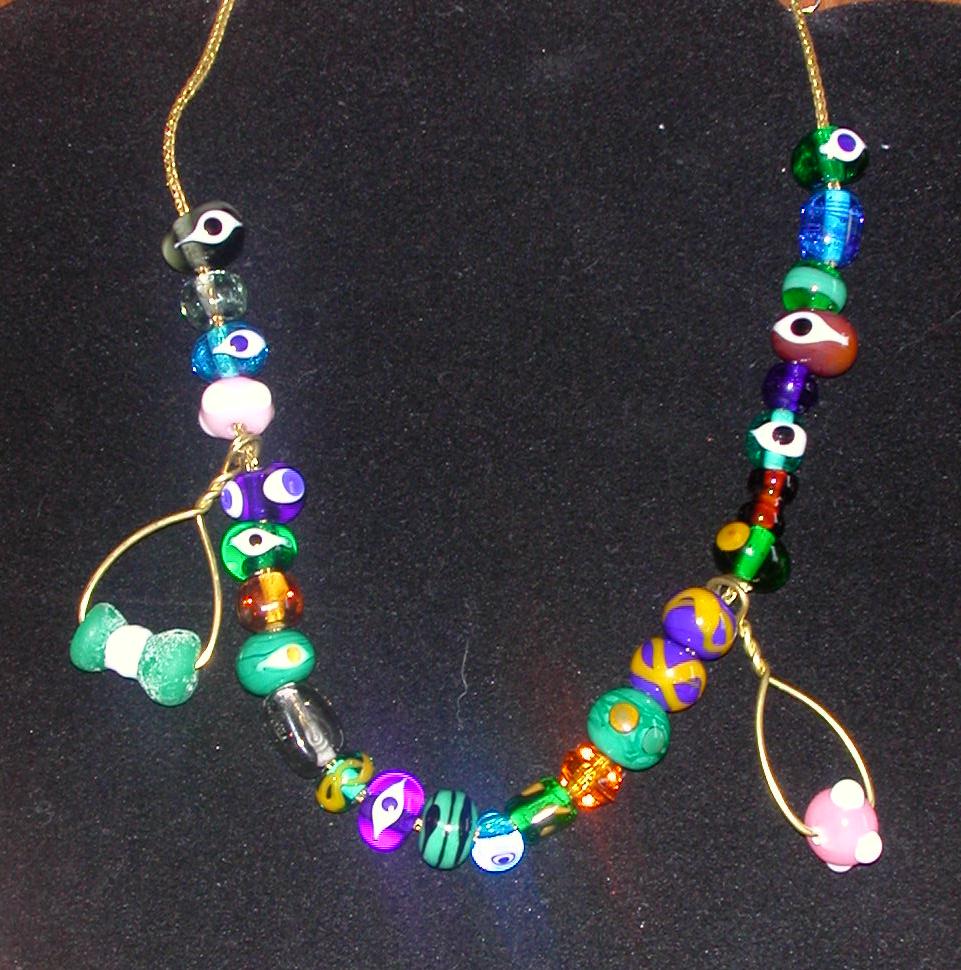![]()
Back to Betha's
Homepage
![]()
Glass
Bead Making
This is just
meant to be a brief overview. Please read additional information
about glass bead making before proceeding on your own. Please be very
careful since molten glass is very hot and can shatter and
burn.
The first Venetian glass making guild was formed early in the 1200's. By 1490 there were several different types of glass making guilds in Venice - the great glass houses that made windowpanes and bottles; and the small glass houses that made ornamental glass and beads. Glass beads were the backbone of the nation's export trade; they were the small change of glass - easy to carry, store and count. They have been taken wherever explorers purchased their way into new countries.
Viking women wore beads suspended
between two large broaches attached to their dress.
I have chosen to string my beads on a thin chain of woven wire between
the brooches as in Erikstorp and Winchester hoards.
Beads were made of many materials, but mostly glass.
The glass and some of the beads were imported, however, the Vikings could
make their own beads. Glass beads
could be plain and a single color, textured or multi-colored.
The glass worker would heat a glass fragment in a furnace and pull it to form a rod. The glass rod would be heated and the molten portion stuck to a mandrel (metal rod that forms the hole in the bead) and wrapped around to form the basic bead. The bead on the mandrel could then be worked into various shapes and/or colors could be added.
Class Handouts
Making Glass Beads - Shaping Glass Beads - Coloring Glass Beads

A ring based on an Ancient Roman ring


![]()